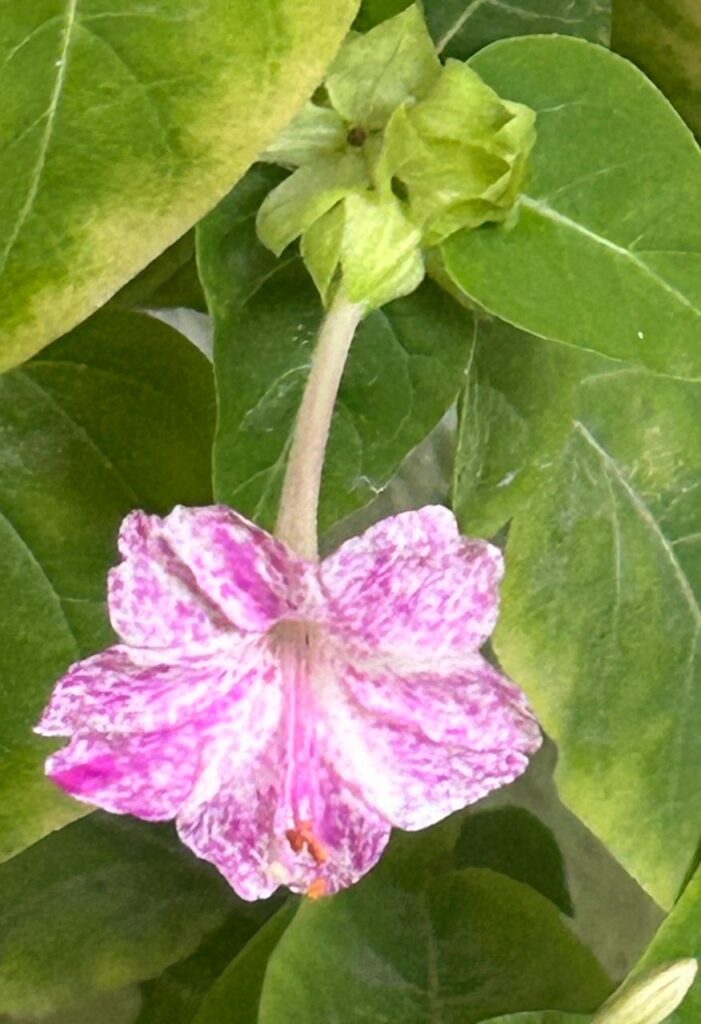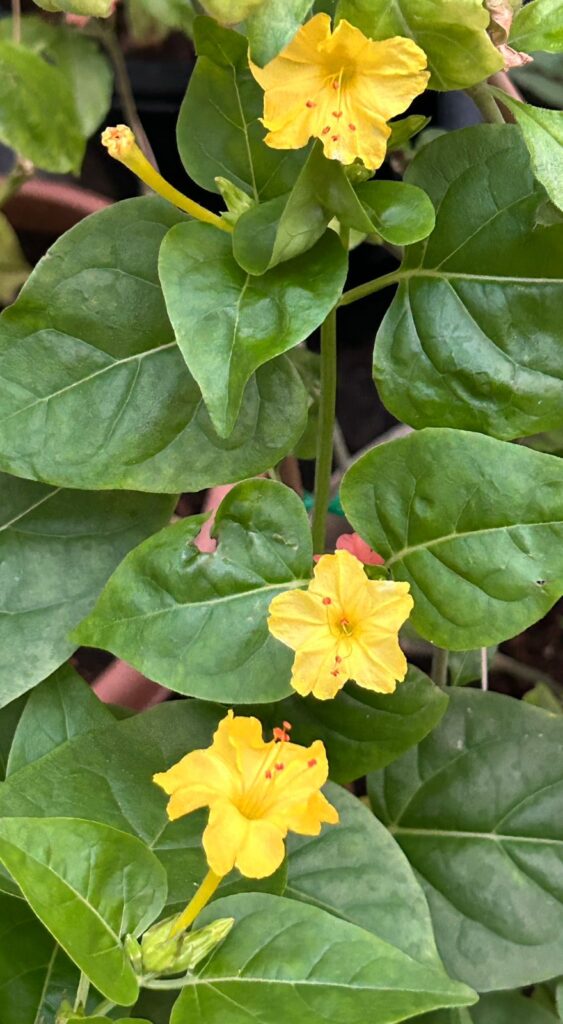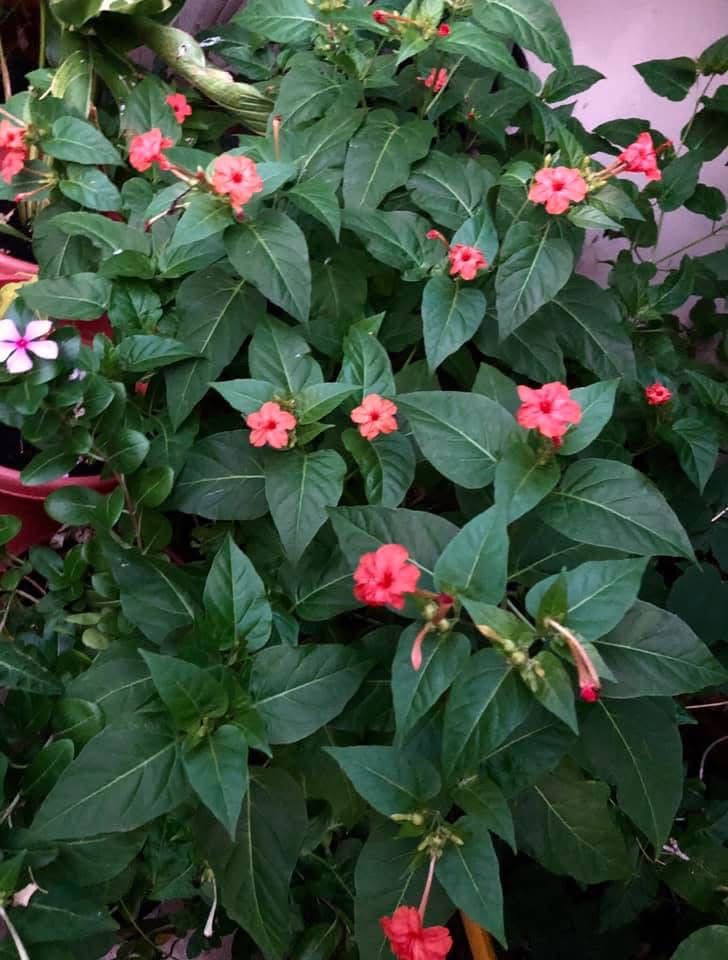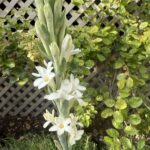Mirabilis are warm-weather creatures and do well in the summers in the Gulf. They would still need a shade net, but bloom well despite the heat and humidity. I would call them a perennial just for that. They self-seed and come back year after year without a problem. They are also called the four’o’clock flowers and come in a plethora of colours and have a mild, refreshing fragrance. The magenta ones are the most popular, but there are gorgeous cultivars in Yellow, Orange, white, and speckled varieties. Their common name comes from the fact that they bloom after 4 pm and well into the night. They are normally pollinated by the sphinx moth, and butterflies, and hummingbirds love them. The following botanical information comes from https://hort.extension.wisc.edu/articles/four-oclocks-mirabilis-jalapa

Native to tropical South America in the Andes – and also sometimes called Marvel of Peru – it is the most commonly grown ornamental species of Mirabilis. Discovered by Europeans in 1540, the root was used by indigenous peoples for medicinal purposes, as a hallucinogen, and as a purported aphrodisiac, while the flowers produce an edible red dye for colouring food. The shrub-like, erect, and spreading, multi-branched plants grow 2-3 feet tall and wide. The weak and brittle stems break easily and flop over if not supported. They are light or bright green but may have a yellow or pink hue. The opposite, ovate, bright green leaves are up to 4 inches long with a pointed end. The plants produce elongated, dark-coloured, swollen to tuberous taproots that can be a foot or more long and weigh up to 40 pounds in climates where they are perennial.

The seeds are normally black and are quite abundant. Nick the pointed end and soak in warm water for 24 hours before planting. They take around 3 weeks to germinate, sometimes longer. Make sure you plant it in a sunny spot with rich, well-draining soil. It can also be used to make a hedge, if planted closely together.
I plant them in October, and by December, they give me pretty blooms. Sometimes I plant them in late January, so I get flowers in spring and right until the end of July. I fertilize them along with the rest of the garden, so I don’t do anything in particular, as long as the soil is good and they have a nice sunny spot. They do get mealybugs occasionally, so just blast them with a high-pressure spray and they will be fine. Feed them with iron twice in a season, and they should look gorgeous.







Recent Comments